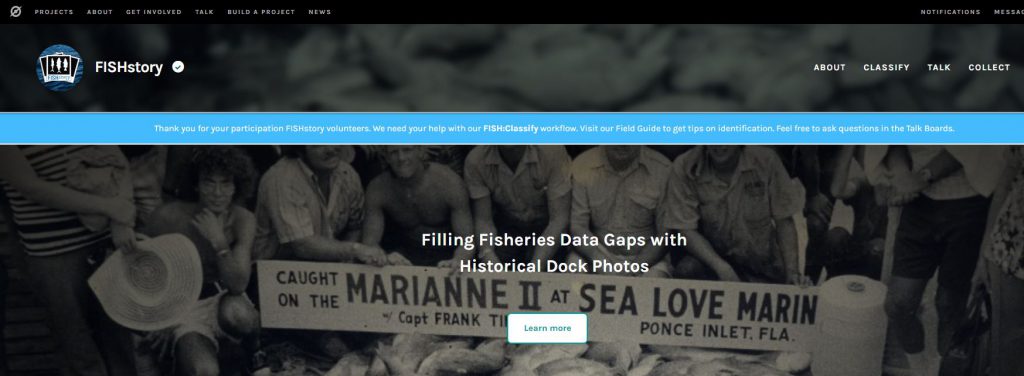
The Fishstory website where you will do your citizen science activities.
4-H members and volunteers are always seeking new ideas for hands-on learning experiences as service activities to positively impact our communities. With covid-19, some community service opportunities have been limited due to social distancing and other restrictions. However, the South Atlantic Fishery Management Council and Florida Sea Grant have a new opportunity for 4-H members to get involved virtually. This opportunity is a citizen science project that would be a great way to build your community service hours and learn something new about fish in the process!
Are any of you into history, helping with research, and like fish? If you answered “yes” to any of these, please consider working with the FISHstory Project! The South Atlantic Fishery Management Council and Florida Sea Grant needs help with a citizen science project to help fill gaps in fisheries data using historical dock photos.
Who can participate? Families and youth ages 16+, or younger youth with an adult mentor who is working with them for the sessions. If you are under the age of 16, you will need your parent to register with you. It is a very simple registration process. First, register for FISHstory at https://scistarter.org/fishstory. Then, click on the https://safmc.net/safmc-fishstory/ link to begin helping count and identify fish in the historical photos.
This project will train you as a citizen scientist to identify and count fish using historic fishing photos from the 1940-1970s, prior to when dedicated catch monitoring began. This is a two-part project. The first part is to simply count the number of fish in the photo. The second part is to identify the fish in the photo. Everything is done online using Zooniverse, so there would be no travel or cost to participate in this project.
Data collected with your help will provide a picture of the fishery in the earlier years. This will help scientists understand the fishing industry prior to dedicated monitoring programs. It will also help improve our understanding of the fishing of several iconic species over the years. This data will be used to help accurately estimate stock productivity from 1940 to 1970 when for-hire fisheries off the Atlantic coast of Florida were gaining popularity. Your help is needed to fill these data gaps to help evaluate assumptions about stock productivity. The historic photos, untapped sources of this important biological data, can help do just that. Analyzing the photos will help provide better information of what people were catching during this time period, seasonality of their catches, and possibly estimate a rough catch per angler, which can provide insights on the health of fish populations during that period.
4-H helps youth to learn the skills needed to lead the positive change in their communities like this one. This is done through hands-on learning opportunities that explore citizenship, community development, and personal growth. For more information on community service projects or other 4-H programs that build essential life skills in youth, please contact your local UF IFAS County Extension Office, or visit http://florida4h.org.
- Recycled Arts for the Fair - October 24, 2024
- Grow a Blue Ribbon Plant - August 28, 2024
- Creating Holiday Gifts Together - December 1, 2023
